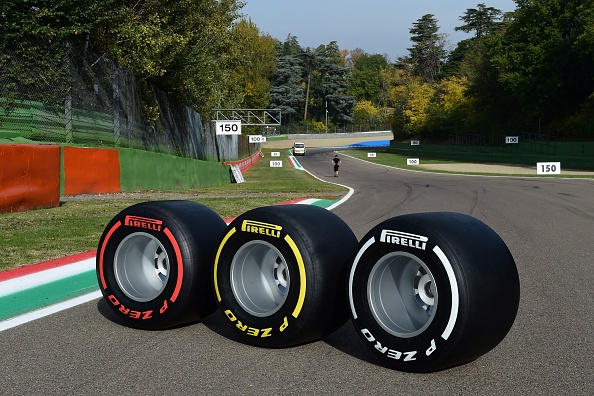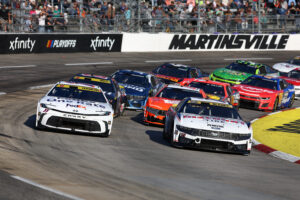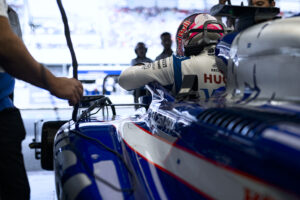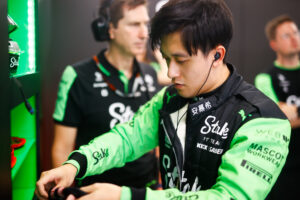During Formula 1 weekends teams can use various types of tires. What are the differences in F1 tires and the rules for using them?
Welcome back to our F1 Explained series. In this edition, we will go over one of the most important parts of an F1 car. A critical piece in securing pole and victory – F1 Tires. Let’s run through the basics.
Who supplies Formula 1 tires?
Italian manufacturer Pirelli is the current Formula 1 tire supplier. They have been the sole supplier since 2011 when they took over from the Japanese manufacturing company Bridgestone. Pirelli’s current contract with F1 and the FIA is set to expire after the 2024 season. Since the start of the championship, Formula 1 has had nine different tyre suppliers: Avon, Bridgestone, Continental, Dunlop, Englebert, Firestone, Goodyear, and Michelin.
DID YOU KNOW? Goodyear (1959-1998) is the most successful tire supplier in Formula 1 with 368 victories.
What tire compounds are used in Formula 1?
Pirelli manufactures five tire compounds for dry weather racing classified as C1, C2, C3, C4, and C5. The C5 is the softest tire with the C1 being the hardest tire. There are also two compounds for wet weather racing: intermediates and full wets.
Each race weekend, Pirelli nominates three of the five types of dry weather compounds to bring along to the race depending on each circuit’s characteristics. Those compounds are labeled as ‘soft’, ‘medium’, and ‘hard’. For example, Pirelli picked C3-C4-C5 for this year’s Monaco Grand Prix, C1-C2-C3 for the Spanish Grand Prix, and C2-C3-C5 for the Australian Grand Prix.
Generally, the soft tire is marked by a red stripe, the medium tire is yellow, and the hard tire is white. Along with the three dry compounds, Formula 1 teams will have intermediate and wet tire options available at every race, even if it is unlikely to rain.
Dry ‘Slick’ Tires
Before getting into the details, remember that the general rule is that the softer the tire, the faster it goes. The harder the tire, the longer it lasts. Now, let’s explain each of the dry compounds.

C1: Compound 1 is the hardest tire in the range. It is made for the circuits that drain the most energy from the tires such as Silverstone and Suzuka. The C1 is built to run for very long stretches with little performance degradation and to be as resistant to heat and extreme forces as possible.
C2: This is the second-hardest compound in the range. It is more suitable for circuits with high speeds, temperatures, and energy loadings, and it is a good option for new circuits where track wear is unknown.
C3: This tire provides an excellent balance of performance and versatility. It is suitable for a wide range of circumstances and can be used as the softest, the hardest, or the medium compound.
C4: This tire is designed to perform well on tight and twisty circuits where a quick warm-up is required to achieve peak performance. This year, Pirelli nominated the C4 tires as the mediums for the Monaco Grand Prix and nominated them as the softest for the Miami Grand Prix and Emilia Romagna Grand Prix.
C5: This is the softest and thus fastest compound in the range. It is suitable for all circuits that require maximum mechanical grip, so you will see it on street circuits like Monaco, which is the slowest circuit on the F1 calendar due to its tight and twisty nature.
Wet Tires
There are two types of wet weather tires: green marked intermediate tires and blue marked full wet tires. The intermediates are used when the track is slick or there is light rain. While full-wet weather tires are used when there is heavy rain or standing water on the track.
Dry tire vs. Wet tire profiles

The hard, medium, and soft tires used in dry races are called ‘slick’ tires. There are no grooves or patterns on them. The lack of grooves means more rubber comes into contact with the circuit’s surface, resulting in a better grip, and making racing easier and faster.
On the other hand, the intermediate and full wet tires used in rainy races have grooves on them to disperse water from the wet road surface. The green intermediate tires are the most versatile of the rain options. Each tire evacuates 30 liters of water per second at 300kph. The full wet tires are heavily grooved to cope with heavy rain conditions. Each tire evacuates 85 liters of water per second at 300kph.
What are the rules regarding tire use?
At every race weekend, each Formula 1 team receives 13 sets of dry tires to use over the full weekend – two hards, three mediums, and eight softs. They also get four sets of intermediate tires and three sets of full wets. If any of the free practice sessions (Friday’s FP1 and FP2 or Saturday’s FP3) are expected to be wet, teams get another set of intermediate tires. However, they must return one of the used sets before the qualifying round begins.
| Tire Type | Tyre Colour | Sets Issued |
|---|---|---|
| Soft | Red | 8 sets |
| Medium | Yellow | 3 sets |
| Hard | White | 2 sets |
| Intermediate | Green | 4 sets |
| Full Wet | Blue | 3 sets |
Previously, drivers who make it to the third round of qualifying (Q3) had to start Sunday’s race on the exact same set of tires they used to get into Q3. While everyone else outside of the top ten was free to select any tire they want. This year, every driver that advances to Q3 has the option of starting the race on any compound they choose, much like the rest of the grid, under the new 2022 regulations.
In dry races, drivers are obliged to run two compounds of the tire, which necessitates at least one pitstop. This rule, however, doesn’t apply in wet races as drivers must use wet tires if the race starts behind a safety car due to rainfall. The driver can change to dry tires at their first pit stop if the rain has stopped.
DID YOU KNOW? Esteban Ocon completed the 2021 Turkish Grand Prix without making a single pitstop, running the entire 57 laps on his intermediates!
🗣️ " A full race on one set of tyres? Can't be done."@OconEsteban: "Hold my Pirelli."
The digital floor is yours, #TurkishGP tyre king. Let's hear it. pic.twitter.com/2zQ814cgTV
— BWT Alpine F1 Team (@AlpineF1Team) October 10, 2021
F1 Tire Strategy & Execution is Key
Formula 1 tires are incredible feats of engineering. They require careful thought and planning from team strategists on how and when to use them, as a single mistake, such as incorrect tire selection or even forgetting one of the tires, can cost the driver valuable points and even a race victory. Think I’m kidding? That has actually happened!
Ferrari cost Carlos Sainz more than 12 seconds at this year’s Dutch Grand Prix, dropping him from third to sixth after the mechanics realized they only had three of the four tires ready for the Spaniard as he came into the pits. He then got hit with a 5-second time penalty for unsafe release and finished the race in eighth place.
As absurd as it may seem, any Formula 1 team, regardless of their position in the championship, can make costly mistakes in their strategy or the pitlane. We’ve seen it countless times. Drivers selecting a particular compound to start on and quickly realizing it was the wrong option. Opted for wets or dry tires too soon or too late as conditions change. Or failing to accurately predict how fast various compounds will run in race conditions. There’s a lot more to it than just putting on four new tires.






